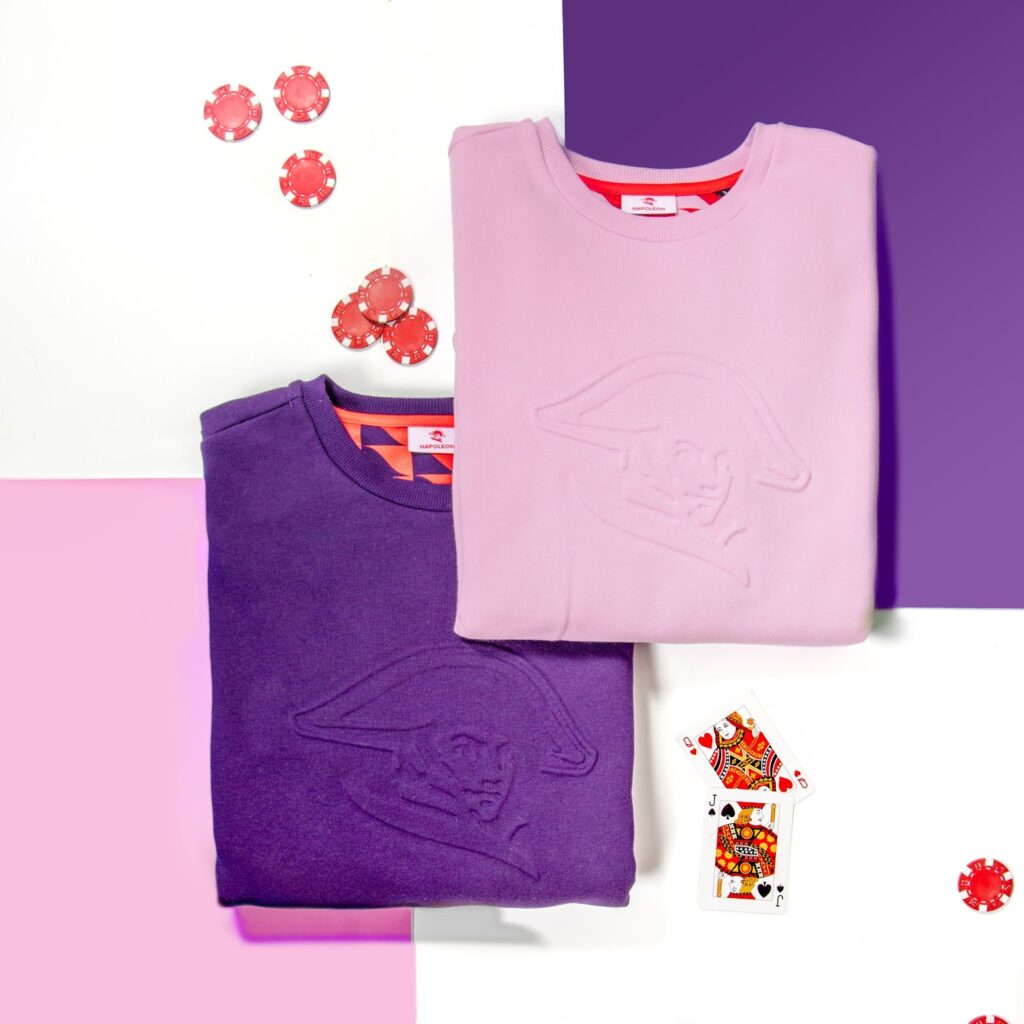Why slash event merchandise costs
Imagine yourself, it’s wednesday. You’ve been preparing for a huge fair in your industry for the last 3 weeks and you’re finalizing the last thing on your checklist. When suddenly… Merchandise! You totally forgot to order the team outfits and merchandise you wanted to hand out. In a total hurry you google local suppliers close to the venue. You contact 3 of them. You get 1 response the next day. While the time is not at your side, it takes ages to get an offer. When finally you just settle for the only items they have in stock, just to have something at the fair. Fast forward to Monday, the big day. Unfortunately, there is no merchandise in sight, and the local supplier is unresponsive. Challenge! What to do?

We want you to never experience this again.
In the dynamic world of events and fairs, managing costs effectively while ensuring a successful and impactful presence on the panel is a constant challenge. For companies, especially event managers and marketers orchestrating numerous events with booths, every penny saved is a penny earned. In 2024, as the landscape continues to evolve, adopting innovative strategies to optimize resources and cut unnecessary expenses (with a more limited budget) is crucial.

We all want the same: the best merch for the best price with the best service, but understanding the pricing structures of suppliers can make a significant difference. Sadly working in the old way this is not attainable, but by following this guide, it is within reach!
Old way:

The story above is the most common way our customers did merchandise before they started working with Sunday. Last minute. Local suppliers in every country. The result is:
- No brand consistency during events (it looks different every time)
- High prices because of last minute small orders
- Very high stress levels for event managers and marketeers
Centralize your merchandise approach

The traditional model of managing merchandise for events involves an ad hoc and often chaotic approach. Different departments order and store their items independently, leading to inefficiencies and added costs. It is way more difficult and expensive to order your merchandise separately for every event with a local supplier in every country than centralizing it. This model saves money in 3 ways:
- Lower product price (large volumes mean better prices)
- Less time spent on ordering merchandise
- No more express fees for deadline events

Crucial to achieve this is a partner that can take over your full logistics. From warehousing to global shipments. Enter the Sunday Wardrobe©, a revolutionary fulfillment platform designed to streamline and centralize your merchandise approach. The platform takes over warehousing, packaging, and shipping responsibilities, transforming the entire process into a seamless, click-and-ship experience. By consolidating these operations, companies can eliminate redundant tasks, reduce storage costs, and enhance overall efficiency. With the Wardrobe©, you not only save on logistical expenses but also ensure a consistent and professional brand representation across all your events. The ease of use and automation offered by the platform translate into significant time and cost savings.
Step 1: Forecasting & Budgeting
The foundation of any successful merchandise strategy lies in accurate forecasting and budgeting. To forecast efficiently, consider historical data from previous events, analyze trends, and anticipate attendee preferences.
Activate other departments within your organization to gather insights and collaborate on the forecasting process. By adding their volumes to your forecast you might be able to negotiate better prices.
Learn how to choose products that align with your audience but can still be used for different purposes. Try to limit event logos or dates on the clothing, so your team and prospects can keep wearing it after the events.

Forecast example

By having a clear need for the next 6 to 12 months, you are in a much better position to find the right partner for your merchandise
Step 2: Finding the right partner
To run a great event merchandise program your partner needs to be great at 3 things: Design, product & logistics.

Design: Your merchandise is the extension of your brand in the real world. It needs to be spot on, the right colors, the right brand feel. Find a partner that does more than just slapping your logo on a tee or a t-shirt that’s “kind of your red”. An amazing design does 3 things:
- It grabs the attention of potential customers & employees on the event
- It gives the team confidence because they look good
- It makes sure that the items are worn even after the event
Product: Quality and sustainability are crucial here. This merchandise is often the first touchpoint a prospective customer has with your brand. Every detail matters, because they will project the quality of this product on the quality of your business. Is your merchandise great quality? Then they’ll immediately connect that with your business. Is it crappy, then… Go for good-quality material that feels comfortable and can be used for years. This increases the total ROI in the short and the long term.
Logistics: Efficient logistics and distribution are crucial for delivering merchandise on time and in pristine condition. Find a partner with a robust warehousing & distribution system. Make sure your partner has experience with global shipments, from smart European logistics to international customs and everything in between. The right logistics partner can help you save hundreds of hours every year. (Like we did for Deel)
Step 3: Execution
Find your flow and connect it to the flow of a trusted partner. Make sure you know each other’s needs and what is important to both parties. Also a great personal relationship is crucial to make everything happen. Because things can go wrong. Things will go wrong. Getting your merchandise all around the world is a challenge no matter how you look at it. Your partner needs to be approachable and act swiftly. You need to be able to fix problems really fast, even if a shipment is stuck at customs on the other side of the world. Steps of execution:
- Decide on your designs for the upcoming year and stick to them as much as possible.
- Decide on the order process: at what point does the partner refill your stock?
- Decide on the shipment schedule: how many days before the event do you need to request the shipment?
- Decide on feedback loops: we recommend monthly in the beginning and quarterly thereafter.
- Decide on a workflow when things go wrong: who does what?
Conclusion
Structuring your event merchandise is a multifaceted process that requires careful consideration at every step. By following this comprehensive guide, you’ll be equipped to forecast accurately, design compelling products, navigate the order process efficiently, and handle logistics and distribution seamlessly. Implementing these strategies will not only enhance the success of your events but also contribute to the long-term success of your merchandise program. Elevate your brand, engage your audience, and boost your revenue by mastering the art of event merchandise.
